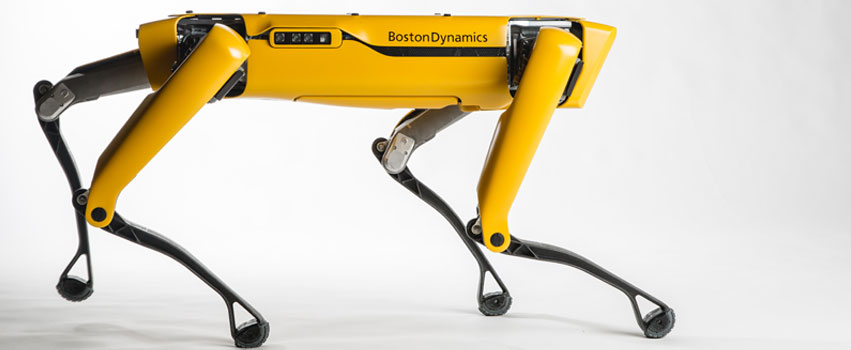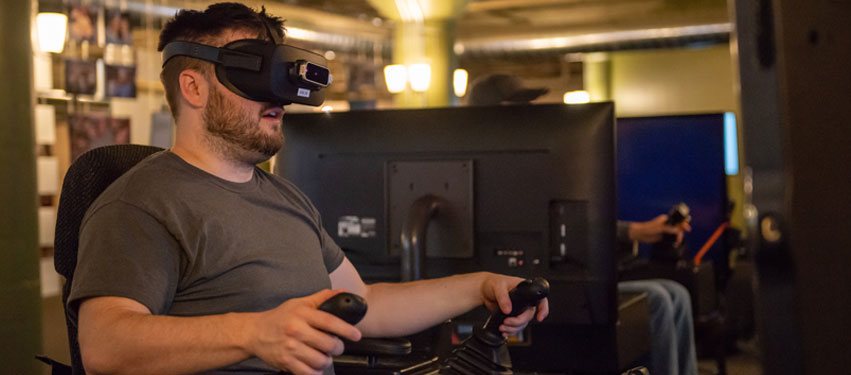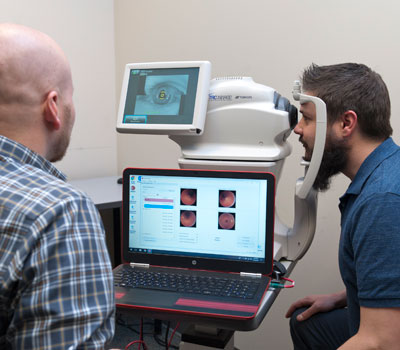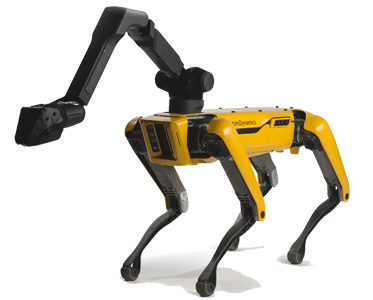
These technologies will soon impact your everyday life—if they’re not already.
We’ve all heard the buzzwords: augmented reality, virtual reality, autonomous vehicles… But what do they mean to the average person? More than you might think. Often, technologies are framed for their use in business, training, education or games. Many are indeed influencing the way we learn our jobs or how our children are being educated.
However, beyond the business-to-business applications developed by companies like CSE Software, many other technologies will soon impact your everyday life—if they’re not already. Here we define some of the most innovative technologies and the ways they benefit the average person.
#1: Augmented reality (AR) is a technology that overlays a computer-generated image on the user's view of the real world, creating a mixed environment. What does this mean to you? It could change your shopping experience, for one. Consider being able to try on something before you buy it—or seeing how a piece of furniture would look in your home. Forward-thinking companies are beginning to adopt AR for such purposes. Formex, Converse and Nike allow you to try on watches and shoes with AR. Apps from Magnolia Market, Wayfair and Ikea let you view virtual products in your own home to check the color, size and style against your decor.
Clothing shopping is still a mixed bag. There are a variety of apps available for virtual fitting rooms—though none give you the same experience as trying on clothing in person. A virtual mirror is one promising AR technology, however. It allows a user to visit the store, look into a “smart mirror,” scan the garment and show the scanned image on the user. The idea is that the user doesn’t have to get undressed to try on multiple garments.

#2: Virtual reality (VR) is an immersive, computer-generated simulation of a three-dimensional environment with which the user interacts by wearing a headset. One of the most promising uses for VR is in healthcare. For example, VR can help stroke patients regain their motor skills. According to Strokemark, 33 independent studies have been conducted with more than 900 patients, showing that VR offers additional recovery benefits for both the sub-acute and chronic stages of stroke. The patient is immersed in the virtual environment with exercises to stimulate the brain, controlling a virtual body with their own body. Through VR, the experiences increase cognitive function and improve perception without straining the patient’s actual body.
 #3: Artificial intelligence (AI) is intelligence demonstrated by machines, as opposed to the natural intelligence displayed by humans. What does AI mean to you? If you have diabetes, it could mean the difference in detecting a related eye disease. The FDA approved the first AI-based diagnostic device to detect diabetic retinopathy—the most common cause of vision loss and impairment in diabetics. How does it work? High-quality images of the patient’s eyes are uploaded and checked by software for indications of diabetic retinopathy. The disorder was correctly identified by the software in 87 percent of cases, while it correctly identified individuals without the disease 90 percent of the time.
#3: Artificial intelligence (AI) is intelligence demonstrated by machines, as opposed to the natural intelligence displayed by humans. What does AI mean to you? If you have diabetes, it could mean the difference in detecting a related eye disease. The FDA approved the first AI-based diagnostic device to detect diabetic retinopathy—the most common cause of vision loss and impairment in diabetics. How does it work? High-quality images of the patient’s eyes are uploaded and checked by software for indications of diabetic retinopathy. The disorder was correctly identified by the software in 87 percent of cases, while it correctly identified individuals without the disease 90 percent of the time.
#4: Internet of Things (IoT) sounds like a broad term. It means networking devices, vehicles, home appliances and other items embedded with electronics, software and sensors, enabling the objects to connect and exchange data. Think about setting your thermostat, turning off the lights or the home security systems now available—all of which can be controlled by a smartphone. The Nest or Ring home security systems allow you to view who is coming to your door via a mobile app and talk to them through your phone/cameras. Wearables such as fitness bands and smartwatches are another category that falls under IoT. Wearables may also let you adjust the TV or other devices around your home.
 #5: Robots are machines capable of carrying out a complex series of actions automatically, especially one programmable by a computer. Robots are everywhere. You may have the Roomba vacuum cleaner parked under a bed right now. Hilton Hotels launched a concierge robot (named Connie) to help guests find the best attractions and restaurants around the area. She can answer questions and help direct guests around the hotel, leaving staff to take care of phones and check-ins.
#5: Robots are machines capable of carrying out a complex series of actions automatically, especially one programmable by a computer. Robots are everywhere. You may have the Roomba vacuum cleaner parked under a bed right now. Hilton Hotels launched a concierge robot (named Connie) to help guests find the best attractions and restaurants around the area. She can answer questions and help direct guests around the hotel, leaving staff to take care of phones and check-ins.
Have you had surgery recently? Robotic surgery is used for many procedures, with robotic arms translating a surgeon’s movements into much smaller movements and incisions on a patient. Often a small video camera is inserted into another tiny incision in the patient to provide magnified 3D images of the surgical site. The robotic arms can move at 360 degrees with precision and flexibility.
Boston Dynamics offers several robots in its lineup, including Spot—a robot that looks similar to a dog and is touted to “comfortably fit in an office or a home.” Spot can maneuver stairs and other terrain, indoors or outdoors. It can empty a dishwasher, deliver packages and more. Spot will be for sale in 2019. It can sleep under the bed with the Roomba.
 #6: 3D printing is a process that prints material as a three-dimensional object. This phenomenal technology offers the potential to solve housing problems worldwide. That’s right: It’s possible to build a large structure using a 3D printer. Multiple construction companies are already building 3D-printed houses, including some in the U.S. One company, ICON, claims to be able to build a concrete house in 24 hours. They unveiled the first one in Austin, Texas. It’s certainly no McMansion, but it’s solid housing—and not bad-looking, in a modern way. Research by the Marine Corps is taking place in Champaign to 3D-print military barracks. Imagine being able to 3D-print housing after a natural disaster, or in the poorest regions of the world.
#6: 3D printing is a process that prints material as a three-dimensional object. This phenomenal technology offers the potential to solve housing problems worldwide. That’s right: It’s possible to build a large structure using a 3D printer. Multiple construction companies are already building 3D-printed houses, including some in the U.S. One company, ICON, claims to be able to build a concrete house in 24 hours. They unveiled the first one in Austin, Texas. It’s certainly no McMansion, but it’s solid housing—and not bad-looking, in a modern way. Research by the Marine Corps is taking place in Champaign to 3D-print military barracks. Imagine being able to 3D-print housing after a natural disaster, or in the poorest regions of the world.
 #7: Autonomous vehicles are self-driving/driverless vehicles capable of sensing their environment and moving with little to no human input. (Understand, too, that autonomous crosses paths with AI and IoT.) The list wouldn’t be complete without a word on autonomous cars. While fully autonomous cars are several years away, more than 250 companies—including all the major car manufacturers—are in development at some level. How does this impact you? If you are not in an autonomous car, you’ll be on the road next to one at some point soon. iBi
#7: Autonomous vehicles are self-driving/driverless vehicles capable of sensing their environment and moving with little to no human input. (Understand, too, that autonomous crosses paths with AI and IoT.) The list wouldn’t be complete without a word on autonomous cars. While fully autonomous cars are several years away, more than 250 companies—including all the major car manufacturers—are in development at some level. How does this impact you? If you are not in an autonomous car, you’ll be on the road next to one at some point soon. iBi
Annette Kiesewetter is marketing strategist for CSE Software Inc., which uses innovative technology like AR/VR and simulation to develop training and education for companies worldwide.

